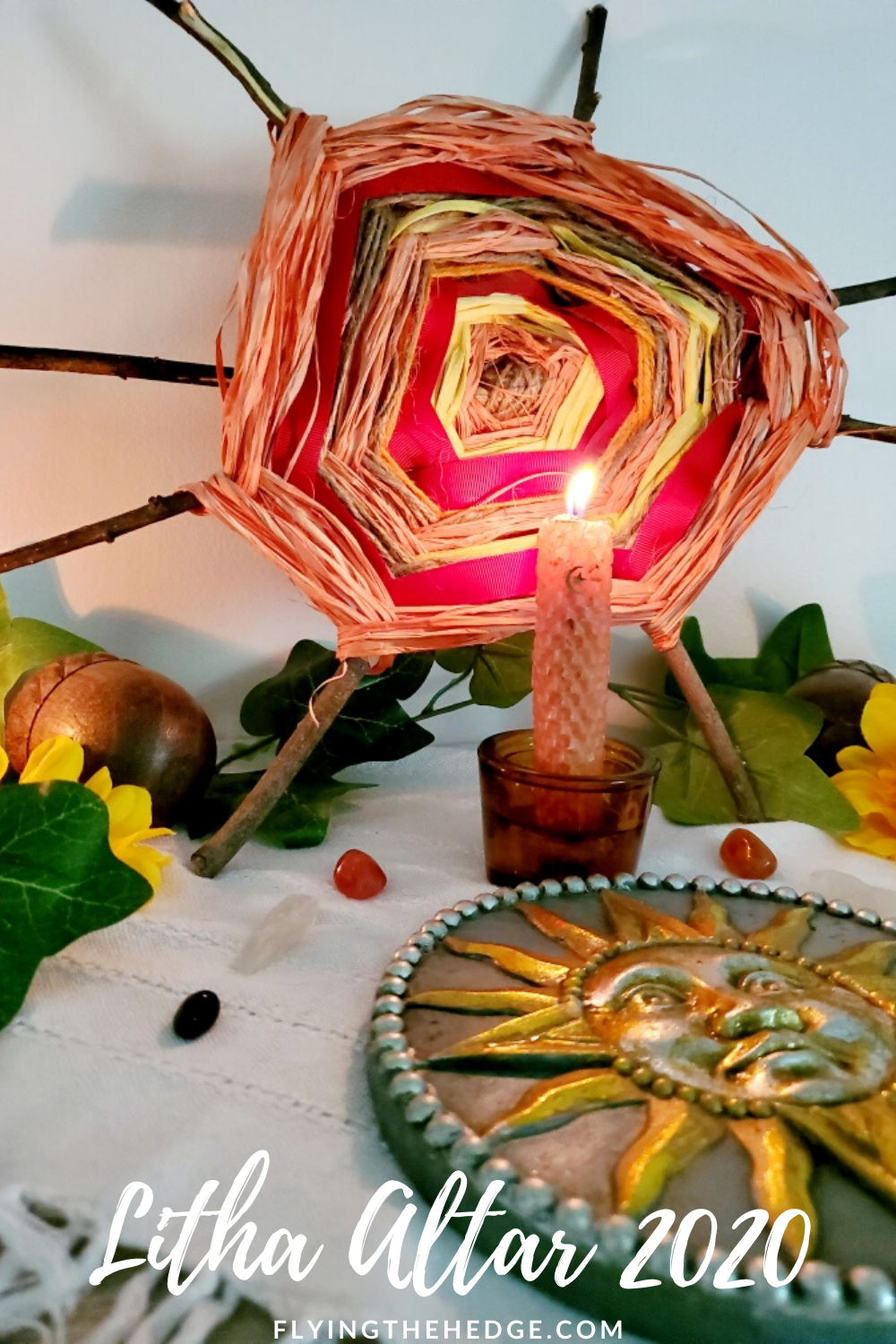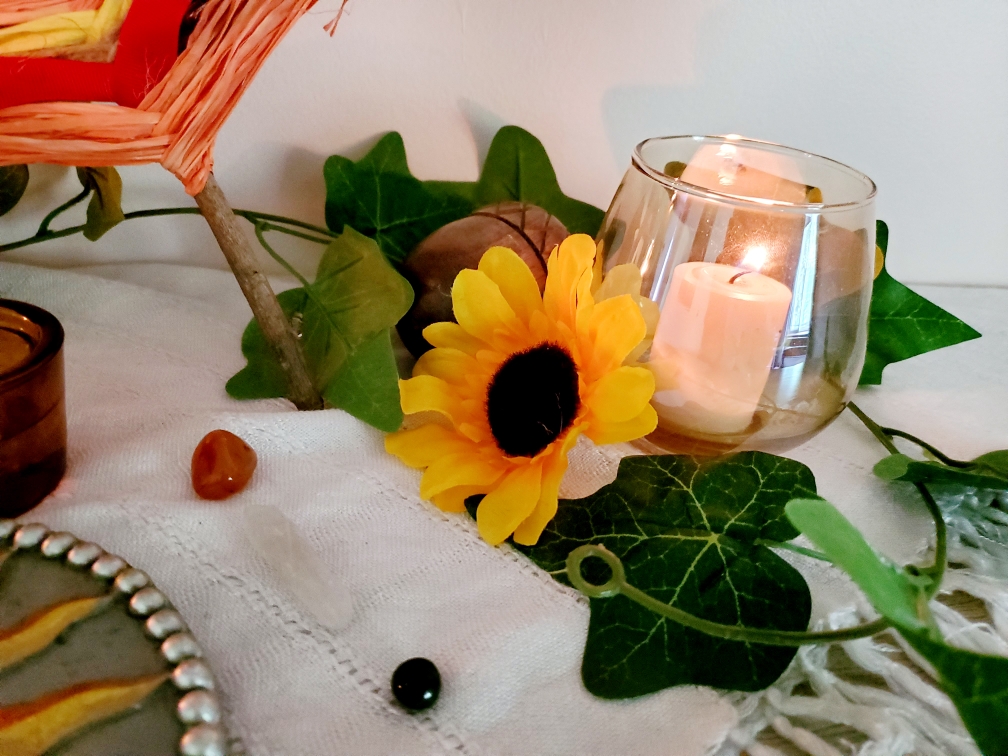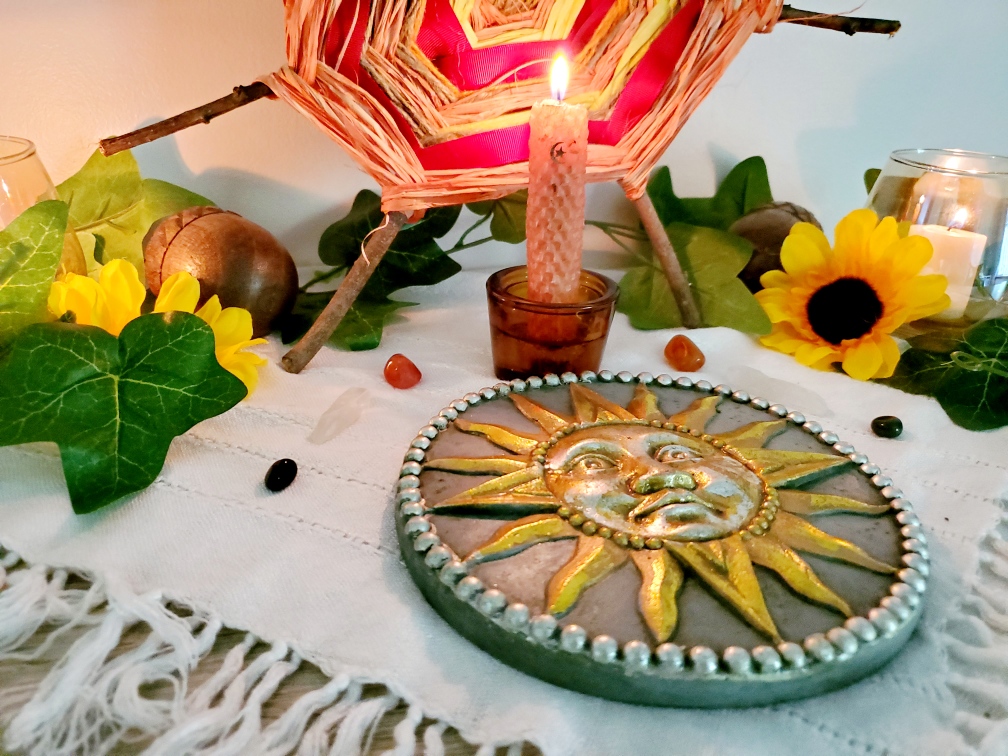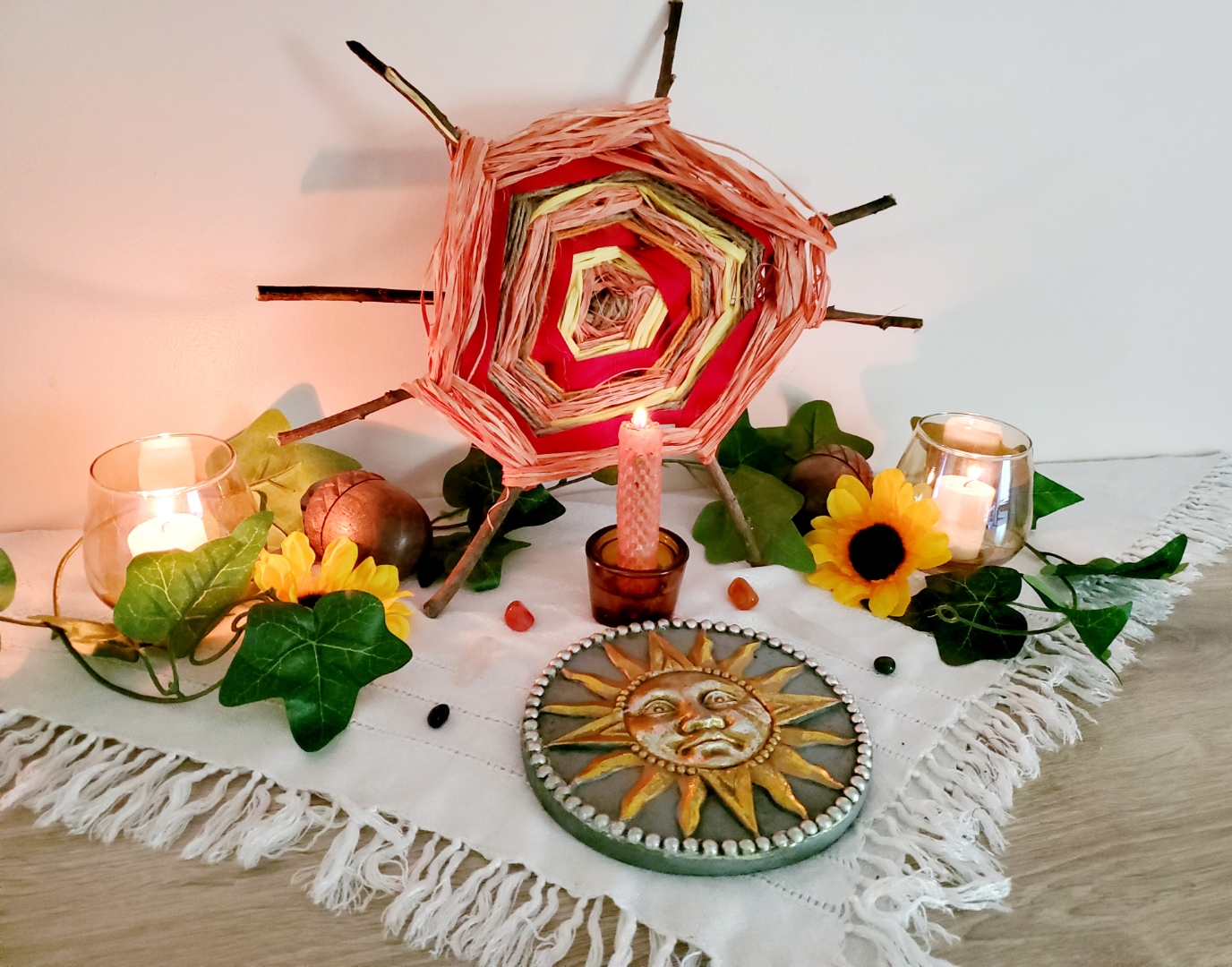1. Sun Wheel- My beautiful Sun Wheel! It represents the Sun, which is most prominent on the Summer Solstice, masculine energy, light, and fertility. I made this and I am so happy to pull it out again to display. It doesn't get to be displayed very long each year. Sun Wheels were commonly created by our ancestors as a form of sympathetic magic. They were thought to help the Sun remain strong through the rest of the growing season, as well as call the Sun to return. (Where did I get it: I made it; Cost: Under $5)
2. Candles in Holders- There are three candles on this altar, all representing the Sun and the element Fire. You can't have a Summer Solstice altar without candles, right? Balefires were not only common at Beltane, but Litha as well. Unlike Beltane, the fires of Litha were for dancing, merrymaking, and cooking, not purifying. Since I can't put a balefire on my altar, candles are the next best thing. The white candles represent fidelity and purity while the central orange bee's wax candle represents strength, vitality, and prosperity. (Where did I get it: Dollar Tree 2020 or Subscription Box; Cost: $3 for cup holders and white candles, $5 for orange candle and holder)
3. Ivy and Silk Sunflowers- The silk ivy represents wealth, abundance, and fertility, as well as the Sun (Horned God) who is strongest on the Solstice. Furthermore, it is an ode to the Holly King who is growing in strength and will bring about Winter in the coming months. The sunflowers, on the other hand, are a representation of the Sun, hence the name. They represent joy, fertility, and good luck. Furthermore, the sunflowers are there to attract the fae and gift us with faerie sight. Faeries are plenty active on the Summer Solstice and should be honored as well. (Where did I get it: Dollar Tree; Cost: $2, $1 each)
4. Sun Plaque- Being the longest day of the year and a celebration of the Sun, it only makes sense to include my sun plaque. I think the representation here is pretty obvious, that this plaque is on my altar to honor the Sun on the solstice, encourage His vitality, and bring continued fertility of the land so our crops many finish growing. (Where did I get it: Dollar Tree 2017; Cost: $1)
5. Carnelian, Quartz, and Bloodstone- The three crystals I picked correspond with the energy of the sabbat. Carnelian represents the Sun, strength, and vitality, the quartz amplifies the power of the altar and represents change, while the bloodstone represents health and vitality. Together they work to give the Sun continued strength through the remainder of the growing season (Where did I get it: Metaphysical Stores; Cost: ~6)
6. Wooden Acorn- Flanking either side of the altar are two wooden acorns. These acorns are an ode to the Oak King and represent protection, good luck, prosperity, and wisdom. From Midsummer to winter, acorns were commonly worn as amulets. Furthermore, acorns are one of the life-sustaining nuts of summer and fall that will get wildlife through the long winter months, thus they represent the continued prosperity of our crops so that we too may have plenty of food to last through winter. (Where did I get it: Gifted; Cost: Free)
TOTAL COST: ~$22
Like my other altars, most of the items I use are found, made, or purchased for around $1, although if the items must be purchased by you, then the cost will be higher. I hope you find this sort of break down helpful, especially those of you looking to create Instagram perfect altars on a budget!
How did you celebrate Litha this year?
If you liked this post and would like to support future content, please consider leaving a small tip in the jar.








Your altar is absolutely beautiful. What a poignant celebrate of the light and vitality, abundant life and timeless enchantment of this chapter of the year.
ReplyDeleteAutumn Zenith 🎃 Witchcrafted Life
Thank you! I woke up this morning to Charlie chewing on one of the sunflowers. That cat is going to be the death of me.
Delete